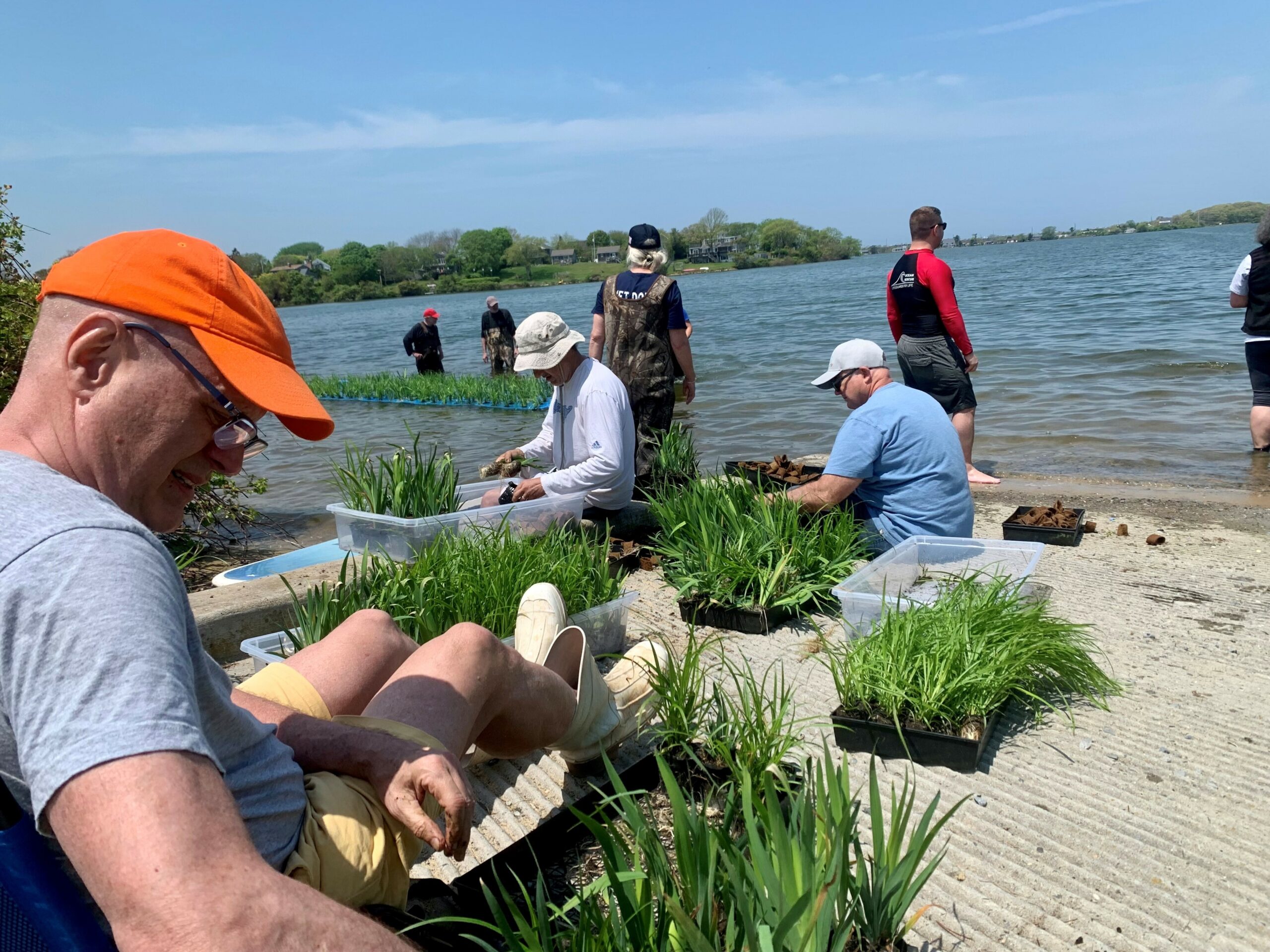
Nearly 50 volunteers helped the Concerned Citizens of Montauk with its recently installation of floating wetlands in Fort Pond.
Through the effort, 7,200 native plants were planted and secured into custom floating mats which were anchored at two locations in the pond. As the plants mature, their roots will uptake excess nitrogen and phosphorus from the pond as food. The plants help reduce the overall nutrient load in the pond which can help lessen the extent and severity of harmful algal blooms that have plagued Fort Pond for years.
According to a press release, CCOM embraces a science-based comprehensive watershed-driven approach to reduce pollutant loadings to Fort Pond and the floating wetlands are just a part of that goal. The group has been sampling Fort Pond for bacteria for nearly a decade; and harmful algal bloom concentrations and toxicity for the last five years through a partnership with the Gobler Laboratory at Stony Brook Southampton.
CCOM has targeted and worked with Fort Pond watershed property owners to encourage and facilitate nitrogen-reducing septic system upgrades through targeted watershed mailings, community meetings, and discounted septic maintenance. CCOM is also a member of the town’s Downtown Montauk Wastewater Committee and seeks to reduce the septic influence from the Downtown commercial district by installing a municipal wastewater treatment system, preventing nutrient-rich groundwater discharges.
Additionally, CCOM successfully lobbied for the removal of direct stormwater discharges into the pond; most recently a New York State Department of Transportation outfall from Route 27 near Puff n Putt and 7-Eleven, and is working to remove more. CCOM has also effectively advocated for the acquisition of priority land parcels, many of which are waterfront, in the Fort Pond watershed, which will ultimately prevent any additional pollutant loadings into the pond.
The floating wetlands are seasonal and reusable, and like last year, will be removed in October and the nutrient-rich plant material will either be re-planted and/or donated to the Montauk Community Garden for composting.
This year’s installation was made possible with in-field assistance from the East Hampton Town Shellfish Hatchery, East Hampton Marine Patrol and East Hampton Volunteer Ocean Rescue.